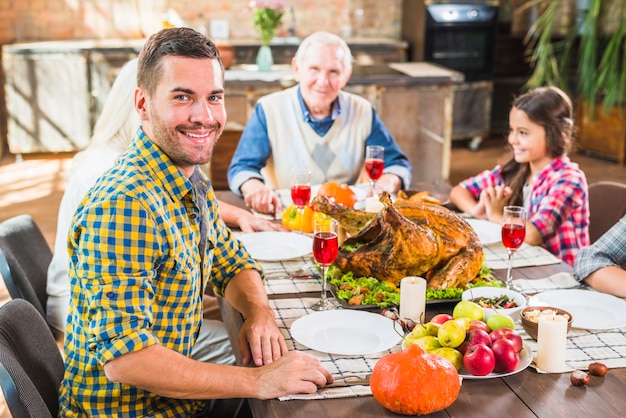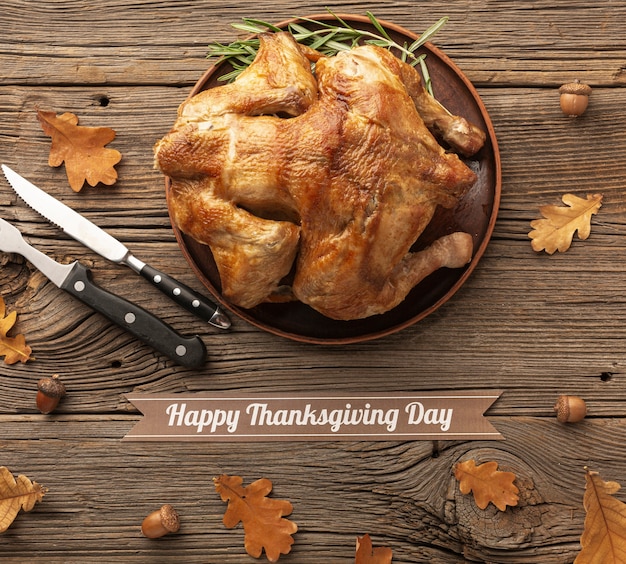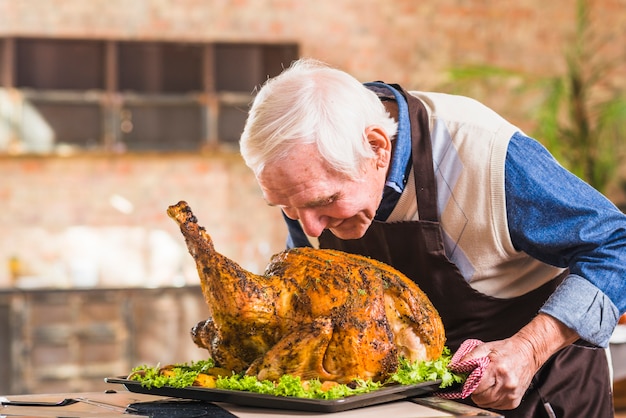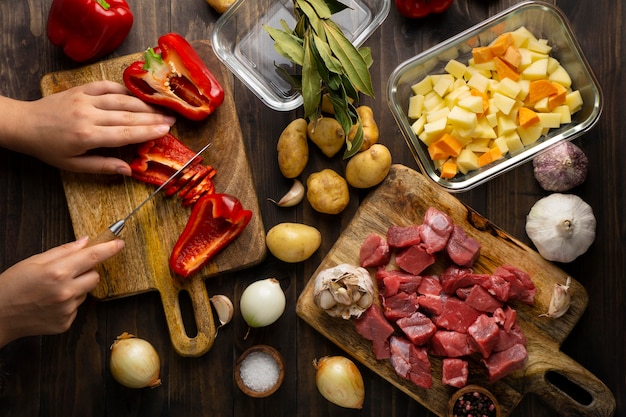(Part 1) Choosing Your Turkey: The Foundation of a Great Feast

Picking the Perfect Bird: Fresh vs. Frozen
First things first, you need to decide if you want a fresh or frozen turkey. I personally prefer fresh turkeys, but frozen turkeys are just as good if you give them enough time to thaw. Just make sure you factor in ample thawing time before you get started.Size Matters: A 20lb Challenge
Now, we're talking about a 20lb turkey, so it's crucial to think about the size. A good rule of thumb is about 1lb per person, plus some extra for leftovers. But let's be realistic, a 20lb turkey is a big bird, so you'll need a spacious oven and a generous roasting pan.The Ideal Turkey: What to Look for
The perfect turkey is plump and boasts a nice layer of skin. You want a good balance of white and dark meat. Avoid any turkeys that seem dry or have an odd smell. If you're buying fresh, ensure the skin is intact and the meat feels firm to the touch.(Part 2) Preparing the Turkey: Setting the Stage for a Flavorful Roast

Thawing Time: Patience is Key
If you're using a frozen turkey, it needs to thaw completely before you can even think about roasting it. This can take a couple of days, so plan ahead! The safest way to thaw is in the refrigerator. For extra peace of mind, I always add an extra day to the recommended thawing time.Brining: A Flavor and Moisture Boost
Brining is a great way to add extra flavor and moisture to your turkey. It involves soaking the turkey in a salt water solution for a few hours or overnight. I know, it sounds a bit odd, but trust me, it makes a world of difference. Plus, it's a good excuse to use a large pot!Stuffing: A Personal Choice
Stuffing is a personal preference. Some people love it, while others find it a bit fussy. If you decide to stuff your turkey, make sure the stuffing is cooked thoroughly to avoid food poisoning.Prepping the Turkey: Getting Ready for the Oven
Once your turkey is thawed and brined (if you choose to), it's time to give it a good wash inside and out. Pat it dry with paper towels and then give it a generous rub with butter or olive oil. This will help the skin to crisp up beautifully during roasting.(Part 3) The Roasting Process: Time to Get Cooking

The Oven: The Heart of the Operation
Preheat your oven to 325 degrees Fahrenheit (160 degrees Celsius). If you have an oven thermometer, double-check the temperature. A consistently hot oven is crucial for a juicy and evenly cooked turkey.The Roasting Pan: A Sturdy Foundation
Choose a large, sturdy roasting pan. I prefer a shallow one, but a deep one will work too. Don't forget to use a wire rack to elevate the turkey so it cooks evenly on all sides.Placing the Turkey: Careful and Centered
Carefully place your turkey in the roasting pan, breast side up. Avoid overcrowding the pan. If your roasting pan is too small, you might need to consider a smaller turkey or cooking in two batches.(Part 4) Cooking Time: The Crucial Calculation
The 20lb Turkey Timetable: A General Guideline
For a 20lb turkey, aim for about 3-4 hours of cooking time at 325 degrees Fahrenheit. This will ensure your bird is cooked through and juicy. However, the actual cooking time can vary slightly depending on the size and shape of your turkey.Monitoring the Turkey: A Gentle Approach
I know it's tempting to keep opening the oven door to peek at your turkey, but try to resist! This can cause the oven temperature to drop, leading to uneven cooking. Check on your turkey every 30-45 minutes.The meat thermometer: Your Reliable Guide
The most reliable way to know when your turkey is cooked is to use a meat thermometer. Insert it into the thickest part of the thigh, avoiding the bone. Your turkey is ready when the thermometer reads 165 degrees Fahrenheit (74 degrees Celsius).(Part 5) Turkey Resting: A Crucial Step for Juiciness
Why Resting Matters: A Time for Relaxation
Once your turkey is cooked, don't rush to carve it! Let it rest for at least 30 minutes, covered loosely with foil. This allows the juices to redistribute throughout the meat, resulting in a much juicier and more tender turkey.Tenting the Turkey: Keeping It Warm and Moist
During the resting period, I like to tent the turkey with foil to keep it warm and prevent the skin from drying out. You can also use a warming tray if you have one.Carving Time: Time to Reveal the Feast
After resting, it's time to carve your masterpiece! Use a sharp carving knife and cut the turkey into slices. You can separate the legs and thighs, then carve the breast into thin slices.(Part 6) Gravy Time: The Perfect Complement
Making the Gravy: From Drippings to Deliciousness
The gravy is a crucial part of any turkey dinner. To make gravy, simply collect the drippings from the roasting pan. You can then add some flour, broth, and seasonings to create a rich and flavorful gravy.Tips for Making Gravy: Elevate Your Flavor Game
Don't throw away the turkey drippings! Use a fat separator to separate the fat from the juices. Add some cornstarch or flour to thicken the gravy. Season generously with salt and pepper.(Part 7) Serving Up the Feast: A Moment to Celebrate
The Turkey Feast: A Culinary Celebration
Now it's time to serve up your masterpiece! Arrange the turkey slices on a platter, surrounded by your favorite side dishes. I love mashed potatoes, stuffing, cranberry sauce, and green beans.Sharing the Feast: Spreading the Joy
Don't forget to carve the turkey at the table! It's a fun tradition that adds to the festive atmosphere. It's also a fantastic opportunity to share the deliciousness with your loved ones.(Part 8) Leftovers: The Gift that Keeps on Giving
The Leftover Feast: Second Helpings of Delight
Alright, so you have a ton of leftover turkey. Don't worry, it's a good problem to have! There are so many delicious ways to use up leftover turkey.Leftover turkey recipes: Endless Possibilities
turkey sandwiches: A classic for a reason! turkey soup: Comforting and flavorful. turkey salad: Perfect for sandwiches or salads. Turkey casserole: A hearty and satisfying meal. Turkey pizza: A fun twist on a classic.Storage Tips: Keeping the Flavor Fresh
Store leftover turkey in the refrigerator for up to 3-4 days. To freeze, wrap it tightly in plastic wrap and aluminum foil and store for up to 2-3 months.(Part 9) FAQs: Common Questions Answered
Q1: How do I know if my turkey is cooked through?
A1: The most reliable way to check if your turkey is cooked through is to use a meat thermometer. Insert it into the thickest part of the thigh, avoiding the bone. The turkey is ready when the thermometer reads 165 degrees Fahrenheit (74 degrees Celsius).Q2: Can I stuff my turkey the day before?
A2: It's not recommended to stuff your turkey the day before. The stuffing will dry out, and the turkey won't cook evenly. It's best to stuff the turkey just before cooking.Q3: What if my turkey is too big for my roasting pan?
A3: If your turkey is too big for your roasting pan, you can either use a smaller bird or cook it in two batches. If you choose to cook it in two batches, roast the turkey halfway through, then remove it from the oven, carve the breast, and return the legs and thighs to the oven to finish cooking.Q4: How do I keep my turkey moist?
A4: Brining your turkey is a great way to add moisture. You can also use a basting solution of butter, broth, or even beer to keep the turkey moist while it's roasting.Q5: What are some tips for carving my turkey?
A5: Use a sharp carving knife and cut the turkey into slices. You can separate the legs and thighs, then carve the breast into thin slices. Cut against the grain of the meat to ensure tender slices. Remember, cooking a 20lb turkey is a journey, not a sprint. It takes time and patience, but the reward is a delicious and unforgettable thanksgiving feast. With this guide in hand, you'll be serving up a culinary masterpiece. Happy cooking!Tips for choosing a turkey
| Criteria | Fresh Turkey | Frozen Turkey |
|---|---|---|
| Appearance | Plump, with a nice layer of skin and a good amount of white meat. No dry patches or strange smells. | Frozen solid, with no visible ice crystals or discoloration. |
| Touch | Skin should be intact and the meat should feel firm. | Should be solid and firm to the touch. |
| Smell | No off-putting odors, it should have a natural poultry smell. | No unusual or strong smells. |
Remember, when choosing a turkey, it's important to inspect it carefully to ensure it's fresh and of good quality. This will guarantee a delicious and safe meal for you and your guests.
Everyone is watching

Perfect Rice Every Time: The Ultimate Guide to Cooking Rice
Cooking TipsAs a self-proclaimed foodie, I've always been a bit obsessed with rice. It's the foundation of countless cuisi...

Ultimate Guide to Cooking the Perfect Thanksgiving Turkey
Cooking TipsThanksgiving. Just the word conjures up images of overflowing tables laden with delicious food, the scent of r...

The Ultimate Guide to Cooking Asparagus: Tips, Techniques, and Recipes
Cooking TipsAsparagus. The mere mention of this spring delicacy conjures up images of vibrant green spears, crisp and burs...

Can You Cook Spaghetti with Gasoline? (The Shocking Truth)
Cooking TipsWe've all seen those crazy internet trends. You know, the ones that make you wonder, "Did someone actually try...

Chorizo and Eggs Recipe: The Ultimate Guide
Cooking TipsRight, let’s talk about chorizo and eggs. You know, that classic Spanish dish that's always a winner. It's th...
